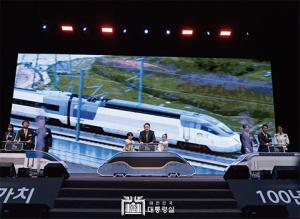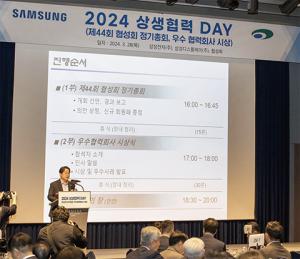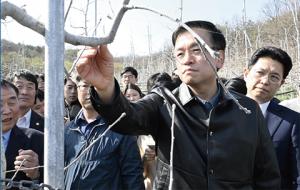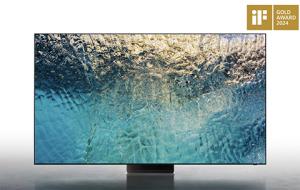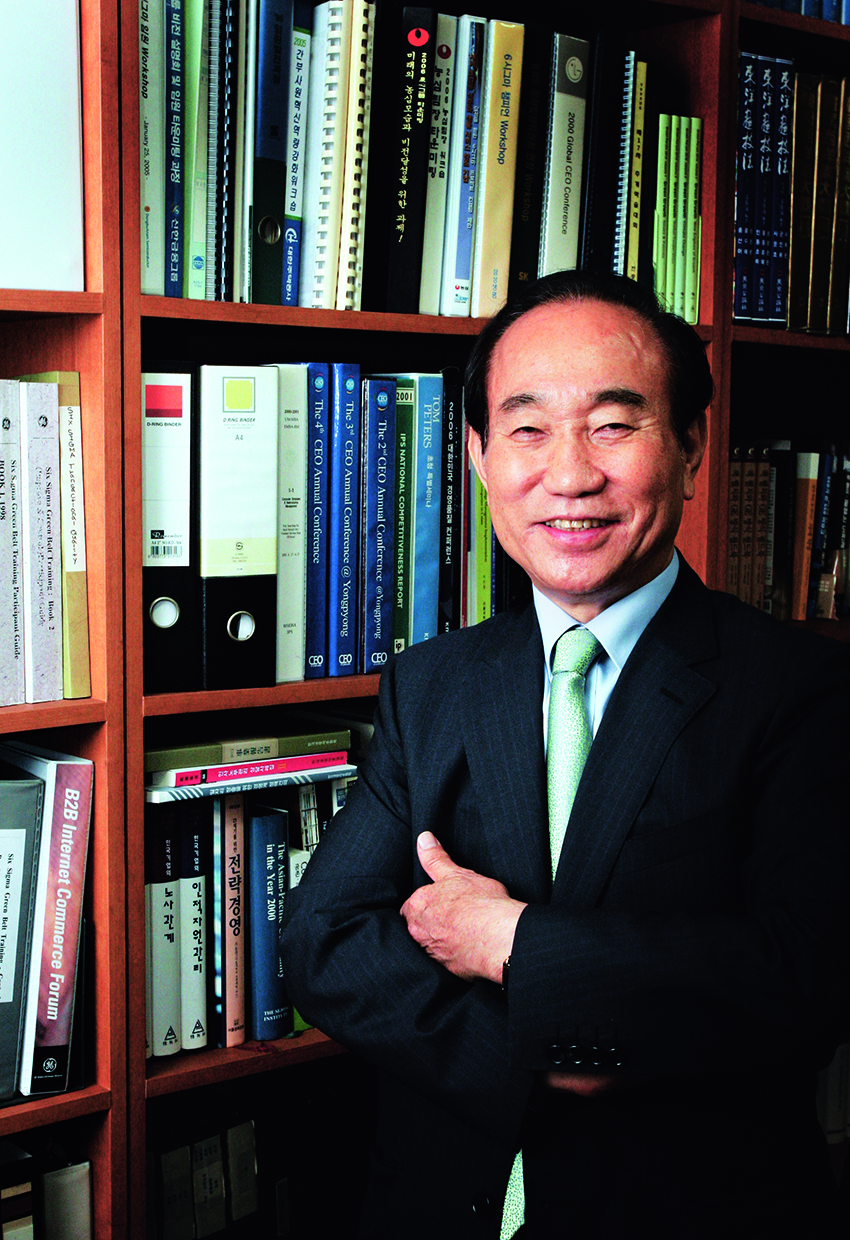
지식경제, 지식사회의 가치창조 경영예술
구도는 크게, 대상과 하나가 되어 소통의 붓으로 가치 창조의 그림을 그린다
한국전문경영인학회 강석진 이사장, 서양화가

가치창조 경영을 위한 지식생산성 리더십의 예술
현대 지식경제이론의 창시자 피터 드러커의 예견대로 현재 우리는 첨단 지식경제의 글로벌 지식경쟁 속에서 살고 있다. 지식생산성이 기업 경영의 가장 중요한 가치창조의 핵심인 시대에, 세기의 경영인들과 어깨를 나란히 하고 글로벌 기업의 리더들에게 경영철학을 전수하는 한국인이 있다. 그는 바로 전 GE코리아 회장으로 잭 웰치 전 GE 회장과 함께 혁신경영과 소통의 리더십을 발휘해 온 강석진 회장이다.
창조, 열정, 프로정신이 그리는 ‘큰그림’
한국전문경영인학회 이사장이며 CEO컨설팅그룹 회장인 강석진 회장은 1981년부터 2001년까지 GE코리아의 CEO로 20년 간 GE의 선진경영 현장을 리더하며 GE코리아의 입지를 세계적으로 알렸다. 강 회장은 GE코리아의 매출을 200배 성장시켰고 당시 GE 회장이었던 잭 웰치는 “GE의 세계화 해법은 더 많은 강석진이 필요하다는 것( We need more Jean Kang for GE globalilzation success )”이라고 말하며 강 회장이 구축한 GE코리아의 모델을 GE의 세계화 전략으로 삼았다.
강석진 회장의 ‘큰 그림’은 1970년대 그의 나이 30세에 미국 뉴욕의 투자금융회사 최연소 부사장으로 일할 때부터 넓은 세계를 바라보는 구도로 틀을 잡아 갔다. 당시 그는 투자금융회사의 아시아 지역 투자사업 프로젝트를 책임지고 있었으며 아시아가 전자산업의 큰 미래시장이 될 것으로 판단, 당시 미국의 5대 전자회사였던 “실베니아”의 보스톤에있는 반도체사업부를 설득하여 투자금융회사의 자본과 결합하여 만든 새로운 반도체합작회사의 생산 기지를 한국에 만들기로 결정하고 한국정부에 외국인 직접투자신청을 했다. 당시 한국정부 경제기획원은 투자 승인 과정에서 한국에 투자신청한 최초의 반도체 생산 프로젝트를 전례없는 원스톱 서비스를 통해 최단기간에 투자승인을 했었다. 70년대초 당시 반도체는 첨단군수산업의 소제로만 사용 되었던 때라 월남전쟁이 종결되자 미국의 군수산업과 반도체산업 전체가 시장 감축으로 경영의 어려움을 격게되고, 이로 인해 실베니아는 그들의 반도체사업 자체를 포기하여 한국투자 프로젝트도 결국 추진이 될 수가 없었다.
당시 국내 양대 전기전자 회사 중 하나였던 ‘대한전선’의 설립자 설경동 회장은 반도체산업에 관심을 가지고 있어 강회장과 인연을 맺게 됐다. 설경동 회장은 반도체 프로젝트를 더 이상 추진할 수 없게 된 강 회장을 설득하여 대한전선의 전자제품 수출 총책임을 맡게 했다.
그때 국내 전자회사는 아직 한국의 독자적인 전자제품을 해외에 수출하지 못하던 때였다. 강 회장은 창조적인 아이디어와 열정을 품고 다시 ‘큰 그림’을 그리기 시작했다. 이는 그 무렵 시작된 그의 화가로서의 시선과도 닮았다. 그의 그림의 독특한 구도속에 펼쳐진 거대한 대자연과의 교감이다. 눈앞에 장대하게 펼쳐진 넓은 세상과의 소통 끝에 얻는 멀리 바라보는 넓은 시선, 이러한 그의 ‘세상을 보는 눈’은 바로 이 시대가 원하는 지혜로 적중됐다.
경영 신화창조의 주역이 되기까지
그가 ‘대한전선’의 수출을 책임지게 된 그는 설경동 회장을 설득하여 한국 최초로 전자제품 독자모델을 개발하는 R&D센터를 사내에 만들었다. 사내 최고의 엔지니어들을 모아 리버스 엔지니어링(reverse engineering) 개발방식을 추진도입해 6~7개월 만에 한국 최초의 대한전선 독자모델 전자제품을 개발했다. 30대의 젊은 나이에 그는 한국 최초의 독자모델 전자재품을 수출 하기위해 세계를 찾아 다녔으며 프랑스와 남아프리카공화국 등 에 수출하는 데 성공했다. 특히 한국이 처음으로 수출했던 남아프리카 공화국의 요하네스버그에 해외현지 고객서비스쎈터를 만들어 운영 했었다. 이것은 한국기업이 최초로 해외에 고객서비스센터를 운영한 사례이다. 이 과정에서 그는 가장 큰 해외 시장인 미국에 진출하기 위해 미국의 최대 전자회사인 GE를 반 년 동안 꾸준히 설득해 마침내 대한전선에서 GE 브랜드의 전자제품을 최초로 생산해 미국으로 수출하는데 성공했다. 그 결과 대한전선은 국내 전자업계에서 1973년 수출 1위를 달성해 그 해 ‘수출의 날’에 대통령상을 수상했다. 대한전선 전자가전 사업부는 그 후 김우중 대우그룹 회장이 인수, 대우전자로 변신한다.
미국의 대표적인 기업 제너럴일렉트릭(GE)은 토머스 에디슨이 설립한 에디슨제너럴일렉트릭을 모태로 하며 세계에서 가장 혁신적인 기업으로 인정받는다. GE를 끈질기게 설득하여 GE의 까다로운 안전검증 절차를 거쳐 GE 브랜드 제품을 대한전선에서 장기간 생산하는 계약을 체결한 강 회장은 GE로부터 그의 열정적이고 혁신적인 추진력을 검증받은 셈이다. 그것이 인연이 돼서 GE는 강 회장에게 새로 시작한 아시아 지역 사업의 경영을 맡아 달라는 요청을 했다. 강 회장을 절대 보낼 수 없다는 설경동회장의 강한 의사와 최대 고객인 GE의 진지한 요구를 절충하여 대한전선과 GE는 강석진을 빌려가는, 말하자면 세계 최초의 경영자 차용 계약을 채결하게 된다. 설경동 회장의 뜻에 따라 강 회장의 소속은 대한전선에 두고 실제 근무는 GE의 경영자로서 모든 책임을 다했다. 이것이 그 후 30년간 GE에서 모든 열정을 쏟아온 강 회장의 새로운 경영인생의 시작의 계기였다. 이는 강석진 회장이 이후 GE에서 세기의 경영인들과 어깨를 나란히 하며 리더십을 펼치게 된 원대한 경영 신화창조의 시작이 됐다. 투자금융회사에서의 사업푸로잭트 추진경험과 전자산업의 세계시장 개척 경험들이 강 회장이 GE에서 세계화의 성공모델을 만들 수 있었던 소중한 바탕이 되었던 것이다.
글로벌 지식경쟁 시대의 사람중심 소통의 리더십
글로벌 지식경쟁 속에서 창조적인 지식생산성의 조직을 이끌어 나가기 위해 필요한 리더십의 핵심은 ”사람중심 경영“과 ‘소통’이다.
강석진 회장은 소통의 리더십에 덧붙여 경영자는 미쳤다고 할 정도로 맡은 일을 좋아하면서 그 일에 푹 빠져 있어야 한다고 말한다. 실제로 강 회장은 GE코리아를 경영하면서 새로운 사업 아이디어가 떠오르면 직접 관련 사업부 경영자들과 벽이 없는 소통을 통해 설득했으며 또한 잭 웰치 회장을 설득했다. 잭 웰치는 자기 일에 자신감을 가지고 열정을 쏟는 강 회장을 전적으로 신임했다.
1980년대 초에 있었던 일이다. 그는 GE의 경영전략회의에서 이제는 아시아 국가를 시장으로 보지 말고 장기적인 동반자로 인식 하면서 그 국가에서 필요로 하는 자본투자와 기술제휴, 세계시장을 위한 현지 생산기지구축과 전략적제휴 등 을 함께 추진할 것을 적극적으로 설득했다. 열정과 신념이 담긴 세계화 사업계획서를 만들어 GE 경영회의에서 여러차례 브리핑을 했다. 그러나 선진국인 미국의 경영계에 세계화 경영의 계념이 없었던 그 당시 GE의 경영자들도 처음에는 이를 받아들이지 못 했다. 강 회장의 1년 반이 넘게 걸친 끈질긴 설득 끝에 GE 경영진은 강석진 회장의 세계화 전략제안에 손을 들어 주었다. 강회장이 제안한 세계화 사업추진 모델을 우선 한국에 먼저 구축해달라는 조건으로 강회장을 한국 GE의 경영을 맡게했다.
GE코리아는 강 회장의 취임 후 10개가 넘는 직접투자회사와 합작회사를 설립했고, 여러 분야의 첨단기술 산업이 GE와의 기술협력으로 만들어졌다. 강 회장의 취임 때는 200만불 정도였던 한국에서의 매출이 20년 후 후임자에게 승계할 때는 40억불, 약4조원 규모의 매출로 200배 성장이라는 신화를 구축했다. 매출 성장도 중요 했지만 강 회장이 그의 장기적인 꿈인 세계화 모델을 추진한 결과로 GE는 한국의 여러 첨단 산업분야에서 한국과 장기적인 동반자관계를 구축하였고 한국정부가 가장 바라는 세계화 협력모델이 되었다. 젝 웰치 회장은 한국의 GE 사업을 GE의 세계화 추진 모델로 선택했다. 자신의 신념을 가지고 모든 열정을 쏟으며 추진해온 그의 장기 전략이 15년이 지나서 세계화 성공모델의 꽃을 피운 것이다.
가치창조 극대화를 위한 창조적 지식생산성 경영리더십
CEO컨설팅그룸 강석진 회장은 2001년 GE코리아 퇴임 후 화가로 평생을 보내야겠다고 생각했지만 한국의 경영계에서 그의 선진경영 노하우를 그의 머리에 담고 떠나도록 할 리가 없었다. 한국 CEO 포럼이라는 전문경영인 단체의 초대 공동대표로 있을 당시 그가 GE에서 은퇴하려고 했을 때 한국CEO포럼의 임원들이 그를 놓아 주지 않았다. 18명이 임원들이 프레스센터에 모여 그와 장시간 토론 끝에 한국 최고의 전문경영인인 그들 모두가 함께 참여 그들의 경영의 지식과 경험을 중견 중소기업과 벤쳐기업 경영자들에게 나누어주기로 합의하여 그날 저녁 회의에서 함께 만든 경영자문 그룹이 바로 CEO컨설팅 그룹이다.
그는 지난 5~6년 동안 네델란드의 대학에서 지식생산성 (Knowledge Productivity) 이론의 창시자인 네덜란드 대학의 케셀교수와 함께 선진 경영경험과 지식을 바탕으로 새로운 학술연구를 해왔다. 그가 추진해온 학술연구는 새로운 분야로서 경영의 최종목표인 가치창조를 극대화 할 수 있는 지식의 생산성이 높은 조직문화를 구축하기 위한 21세기 지식경제 시대의 경영리더십에 관한 것이다. 그동안 강석진 회장의 연구 결과가 금년 중 학술논문으로 네델란드에서 책으로 출판될 예정이다. 앞으로도 강 회장은 경영 예술가로서 경영의 최종목표인 가치창조의 극대화를 위해 지식생산성이 높은 조직문화를 구축할수 있는 경영자의 리더십 방향을 제시 할 것 이며 지식생산성과 가치창조 경영을 구내외 경영계에 전파할 계획이다. 다른 한편으로는 화가로서 활발한 미술활동을 해오고 있는 그는 원대한 대자연과의 마음의 교감을 통해 자연의 생명이 함께 숨쉬는 풍경, 그들의 정신세계를 그의 화폭에 담게 될 것이다. 강석진 회장은 현재 이화여대 경영대학원과 서강대 경영대학원 겸임교수, 서울대국제대학원 등의 초청강사로 강연을 해 왔으며 한국전문경영인학회의 이사장으로서 학계에 깊이 관여하고 있다. 또한 화가로서 세계미술문화진흥협회 이사장인 그는 한국미술의 세계교류에 많은 역할을 해오고 있다.
In A Knowledge Economy, Value Creation Management is an Art
A landscape painting of value creation (wide-view composition)
by Kang Suk-Jean, Chairman of the Korea Professional Management Academy and the CEO Consulting Group, Painter
Knowledge-productive leadership for value creation
As predicted by Peter Drucker, who first introduced the theory of the knowledge economy, there is a global competition for advanced knowledge in today’s business world. In this era in which knowledge productivity is the most important factor for value creation and the priority of business managers, one Korean management scholar and artist is sharing his management philosophy with business leaders. He is Kang Suk-Jean, former chairman of General Electric (GE) Korea. He has created a visual representation of the innovative and creative management style and people-oriented leadership he exercised together with Jack Welch, former chairman of GE, the world's most admired business leader.
A large-scale painting of management philosophy reflecting creativity, passion, and professionalism
Kang Suk-Jean, chairman of the CEO Consulting Group, was the CEO of GE-Korea from 1980 through 2001 (21 years). He was instrumental in leading GE businesses in Korea to become exemplars of successful global business management. During this period, the total revenue of GE’s business in Korea increased 200 times. In the early 1990s, the chairman of GE, Jack Welch, stated that "We need more global leaders like Jean Kang for the successful globalization of GE". Jack Welch recommended that GE business leaders attending the conference use the GE business model in Korea established by Mr. Kang as the model for globalization of all GE businesses.
Mr. Kang's big picture of globalization arose from the broad perspective he gained when working as the vice president of a U.S. investment banking firm in New York at age 31. He was in charge of the firm's investment projects for the Asiatic region. He developed a joint venture company between the semiconductor division of Sylvania Electric and the investment banking firm, combining the technology of Sylvania and the investment capital from the finance company. The joint venture company, Dartmouth Electronics, decided to build a semiconductor manufacturing plant in Korea. The Korean Government at that time approved the foreign capital investment project within a few weeks with the help of one-stop services. During that time (in the early 1970s), semiconductors were used in the defense industry only. When the Vietnam War was ending from early 70s, the American defense and semiconductor industries faced significant difficulties as the market demand disappeared.
As a result, Sylvania Electric closed its semiconductor business division, and the joint venture project Mr. Kang had developed for semiconductor manufacturing in Korea could not be implemented. Chairman Sull Kyung-Dong, the founder of the Taihan Electric Wire Company (Taihan), one of the top two electric and electronic companies in Korea at that time, had interest in the semiconductor project Mr. Kang was working on. As the semiconductor project could not be implemented, he tried to convince Mr. Kang to take responsibility for exporting the company’s electronics products.
Mr. Kang accepted Chairman Sull's proposal and took on the responsibility of exporting Taihan's electronics products. However, he faced an unexpected dilemma: the electronics industry in Korea, including the Taihan did not have their own product models for export. The electronics industry in Korea was in its beginning stages at that time.
Using his artistic imagination, Mr. Kang started drawing a wide-scale big picture inspired by creative ideas and passion. As the way he painted landscapes through spiritual silent communication with Mother Nature, he could draw a unique style composition of landscape, depicting the world market for exporting Taihan's electronics products.
With his own creative big picture, he visited Japan and Europe and bought best electronics product models of leading electronics companies in Japan and Europe. He then convinced Chairman Sull to make an in-company R&D organization for developing Taihan's own electronics product models for export. Chairman Sull accepted Mr.Kang's recommendation immediately and supported organizing the best R&D team. This was the first in-company R&D organization for new model development in the Korean electronics industry. The company’s best electronics engineers worked on R&D projects to develop Taihan's own models using reverse engineering approaches to save time and to minimize risks. As a result, Taihan had its own electronics product models for export after several months. With these models, Mr. Kang began to develop export markets, and Taihan started exporting to France, South Africa, and a few Asian countries. However, Mr. Kang had challenging goals: his next target market was the U.S.A., the world’s largest electronics market and its largest electronics company, GE. It took six months to convince GE and to pass rigorous testing and approval processes. Finally, GE and Taihan signed a long-term contract for manufacturing of GE brand products in Korea.
After two years, Taihan became the No.1, premier exporter of electronics industry in Korea, winning a presidential award on “Export Day” that year. Thus, Mr. Kang achieved his goal within two years.
General Electric (GE), founded by Thomas Edison, is known as one of the most innovative and successful companies in the world. Mr. Kang’s persistent persuasion for more than 6 months, and the company’s successful completion of the fastidious process of quality and safety testing, and signed the first long-term contract for manufacturing of GE-brand products at Taihan's plant in Korea. Throughout these processes, his passionate and innovative drive for success was observed and recognized by GE management. Thus, GE proposed that Mr. Kang be in charge of managing GE's new business in Asia. However, Chairman Sull of Taihan did not want to lose Mr. Kang, but neither did he want to lose GE, the biggest customer for Taihan. Therefore, GE and Taihan agreed to sign the world’s first unique contract in which GE borrows Mr. Kang from Taihan. Under the terms of this contract, Mr. Kang remained an employee of Taihan, but worked full-time for GE managing GE business operations. This was the beginning of Mr. Kang’s new life with GE managing the world’s most advanced businesses for 30 years.
Communication is the key to success in the global knowledge competition
At the beginning of the 1980s, Mr. Kang tried to persuade GE management at a company strategy meeting not to see Asian countries as markets any more, but to consider them to be long-term strategic partners. He recommended to build long-term partnerships between GE and companies in Asian countries through direct capital investment, joint venture partnerships, technology assistance, and long-term OEM (original equipment manufacturing) agreements to enter the world market together as strategic partners.
At that time, globalization was not a familiar management concept in the business world, and GE’s management also had difficulty accepting Mr. Kang's presentation about this strategic new approach to Asian countries. However, Mr. Kang did not give up on his proposal. After his tenacious persuasion for more than one and a half years, the GE management finally gave the green light to Mr. Kang’s proposal, adopting a new approach to Asian countries that is similar to today's globalization. This agreement came with the condition that Mr. Kang must establish a success model in Korea first. This is how Mr. Kang became the national executive and president of GE Korea in 1980.
During Mr. Kang’s managing GE businesses in Korea, GE invested to establish over ten companies, formed several strategic alliances and technology assistance agreements, and engaged in long-term cooperation for OEM manufacturing in Korea.
Soon afterward, globalization became an important hot issue for businesses management in the developed countries. At a GE management conference in early 1990s, Jack Welch selected GE Korea’s business operations as a success model for globalization of all GE businesses. The Korean Government also described GE Korea’s business model as the most desirable foreign company's business operation in Korea.
Chairman Kang’s long-term strategy and global approach has at last blossomed 15 years after he started introducing his own globalization strategy becoming the norm all over the world.
The success of this idea came through constant communication. When he hit upon a new business idea, he persuaded managers of related businesses through open communication. Jack Welch, too, trusted Chairman Kang completely. Mr. Kang’s passion comes from his conviction. He directs all his energies toward business success with confidence; the word “failure” is not in his vocabulary. This is true of many things in his life, not just his management philosophy.
CEO consulting for knowledge productivity and value creation
Chairman Kang thought of spending his life as an artist after retiring from GE Korea, but Korea’s business circles did not allow him to leave without sharing his knowhow and advanced management skills. He attempted to retire from GE while he was the first co-chairman of a professional management group called the Korea CEO Forum, but the board members of the organization did not want to lose him from the business community. One day, 18 board members gathered at the Korea Press Center to discuss the subject at length. After long discussion, they all agreed to participate organizing a management consulting group to share their management knowledge and experiences with managers of middle and small enterprises and venture companies. This is how the CEO Consulting Group was organized by the management team after the dinner meeting.
For the past five years, Mr. Kang has conducted academic research at a university in The Netherlands on the correlations between leadership, organizational culture, knowledge productivity, and value creation. This research has been based on his managerial experience and knowledge. The results of this study are scheduled to be published in The Netherlands this year in a book of scholarly papers. Mr. Kang will continue to share his academic research findings, presenting guidelines for business leaders as to how to create a knowledge-productive organizational culture and achieve high value creation, which is the ultimate objective of business managers.
He emphasized that a CEO must embrace the whole of corporate businesses in his heart and be able to advance toward new businesses and future growth engines looking five or ten years ahead, considering value creation as the top priority. In the global knowledge competition, the core leadership characteristics required to lead a creative, knowledge-productive organization and implement people-oriented management,
As an artist, he will communicate with Mother Nature to express his feelings and thinking of the great nature on canvas. Mr. Kang is currently giving lectures as a professor at the business schools of Ewha Women’s University and Sogang University for students and business executives. He also deeply involved in academic society as chairman of the Korea Professional Management Academy.
진경호

